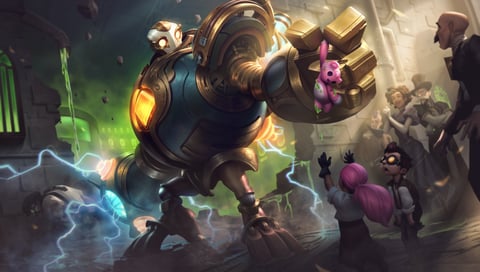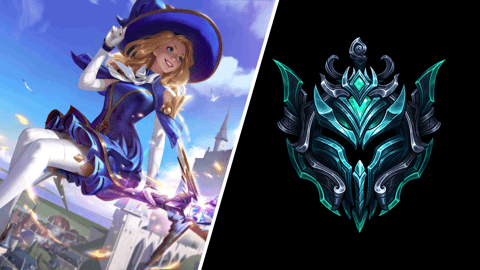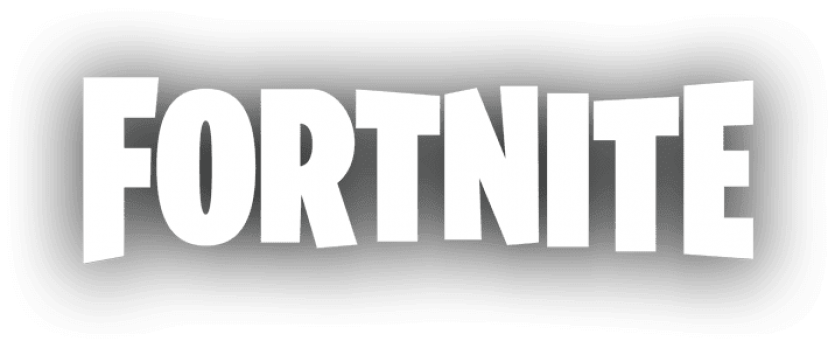Are you wondering what League of Legends ranks are, how the ranking system works and how tough it is to move up? We've got you covered with all the info you need on the LoL ranks, climbing, and what it means to be a high-tier player.

League of Legends remains one of the most renowned online games. Approximately 150 million people actively play League of Legends, which demonstrates that despite being over a decade old, the game continues to enjoy widespread popularity.
For newcomers who aspire to enhance their League of Legends skills, there exist several LoL-specific terms, one of which revolves around the discourse on LoL ranks. What precisely is the ranking system devised by Riot Games for League of Legends, and how does one ascend the different tiers within League of Legends, also known as "elo hell"? These are the questions we will delve into today.
League of Legends Ranks: The LoL Ranked Mode Explained
The term "Ranked" refers to the LoL ranking system. It's one of several game modes available in League of Legends. The game offers various modes, including ARAM, normal games, and ranked games. Players who reach level 30 in League of Legends unlock the ranked mode, enabling them to accumulate LP (League Points) through ranked matches.
It's important to note that players who opt for normal games or ARAM will not see any influence on their LoL ranks.
League of Legends Ranks: Overview
When the ranked ladder was first introduced to League of Legends during its beta phase, there were four ranks: Bronze, Silver, Gold, and Platinum. The ranks have since expanded and evolved with additional tiers and divisions.
Currently, there exist ten distinct ranks in League of Legends. Each rank is associated with a specific name, border, and icon. This design facilitates an effortless evaluation of a player's skill level, as individuals within the same rank and tier should exhibit comparable proficiency in League of Legends.
The ten ranks currently in League of Legends, ranked from the lowest to the highest on the ladder, include:
- Iron
- Bronze
- Silver
- Gold
- Platinum
- Emerald
- Diamond
- Master
- Grandmaster
- Challenger

League of Legends: Introduction of the New Emerald Rank in Season 13 Split 2
Commencing from Season 13 Split 2, Riot introduced the Emerald Rank to League of Legends. But what prompted the addition of this new rank? Developers expressed dissatisfaction with the rank distribution within the game. Originally, the player base was intended to be evenly distributed across Bronze, Silver, Gold, and Platinum tiers.
The intention was for Bronze and Silver to serve as the proving grounds for below-average and average players, while above-average players would compete in Gold and Platinum. However, in recent seasons, a significant number of above-average players found themselves trapped in Silver. The introduction of this new rank aims to redress the imbalance in the rank distribution once again.
When Was Iron Rank Introduced To League?
The lowest tier is Iron, in which beginners usually land when they first start playing League of Legends. Riot Games introduced the tier in 2018 ahead of Ranked Season 9. Iron tier was added in so players could better visualize their gains when just beginning to play.
So, this means that if you’re a new player just starting out, you’ll most likely end up spending a bit of time in the Iron rank, but it shouldn’t discourage you. This is where you learn which LoL champion or role fits you best.
At the same time, when Iron tier was introduced to League of Legends, Riot Games also implemented a new rank for those who made it out of the lower elos – considered to be anything below Diamond. Grandmaster was also included in 2018 to better differentiate between Master and Challenger players since the skill disparity between these two ranks was often too great.
For 2023 Riot announced the addition of the Emerald rank, placed between the Platinum and Diamond Rank.
What Is LoL Challenger?
Challenger is the highest rank in League of Legends and represents the top 300 or 200 players of each region. To achieve Challenger rank, players will have to make it through the nine previous LoL tiers.
Challenger was very different at first: Riot Games added the Challenger tier to League of Legends' ranked system in Season 3, which began in February 2013. This tier was introduced to represent the top 50 players on each server, based on their matchmaking rating (MMR).
Making it through those eight tiers to try and get to Challenger will often seem like you’re in elo hell, due to the difficult grind and the tough losses. Most players won’t make it to Challenger either, ending up stuck either in Silver or Gold ranks, which are the most populated.
Though, anyone wanting to go pro will have to make it through this elo ladder. If you want to get scouted by a professional team to make it to their academy, or even LEC/LCS roster, you’ll have to rank within the top 300 or 200 players of your region to be considered.

How Do Ranks In League of Legends Work?
Now that you know what Ranks in League of Legends are and which Ranks there are available, let's take a closer look at how Ranks work in the Riot MOBA.
How Do Tiers and Divisions Work In LoL?
As we mentioned above, there are nine tiers in League of Legends. Each LoL tier is divided up into four divisions – each division being represented by a roman numeral IV to I.
Players are able to achieve any rank once they hit level 30. This means, you must first play a solid number of games wherein you acquire enough game knowledge before being allowed to play games on the ranked ladder.
But how do you move between the ranks and divisions in League of Legends? Well, as of Season 11 Riot Games made some changes to the way to move between divisions. Players don’t have to win 3 out of 5 games anymore to move between divisions. This means players have a higher chance to rank up, but also a higher chance to rank down as well.
Moving between tiers has been adjusted at the start of the 2023 League of Legends season. While before players had to play a best-of-five series, they'll now only need to play a best-of-three.
How To Get Your First Rank In LoL?
It’s also important to note that players are not automatically thrown into Iron IV – the lowest tier and division in League of Legends – once they hit level 30 and decide to play ranked on their LoL account.
Instead, each player must complete provisional ranked games – also known as placement matches – in which their official LoL rank gets calculated. So some players, who have a high skill level could be placed into Silver II after finishing their placement matches, without ever having stepped foot in Iron or Bronze.
So it is important for players – especially those of you who don't want to fight through every single rank before making it to diamond tier – to focus on their placement matches when starting off playing ranked games.

What is LP?
LP is short for League Points and is what you need to be able to move between the ranks. You gain LP by winning games, but you’re also able to lose LP when you encounter a defeat. The amount of LP you gain depends on your or your opponents MMR – don’t worry, we’ll get to that soon.
So, while you’re playing, you’ll want to rake in as many wins as possible, so you can gain LP and try to reach 100 LP. Once you’re at 100 LP you’ll be able go to the next tier.
Riot Games introduced the League Points (LP) system to the ranked mode in League of Legends during Season 3, which started in February 2013. LP replaced the previous Elo rating system and is used to track a player's progress and determine promotions and demotions within divisions and tiers.
What is MMR?
A LoL player's MMR refers to your matchmaking rating, which is a number Riot assigns to you based on your skill level. It also means the lower your MMR and the higher the MMR of your opponent is – and you beat them – the more LP will be gained.
A player's MMR is based on their own skill level, so winning multiple games in a row will heighten their MMR and they will be paired up with players who have a similar MMR in matches. This means that even if you’re in Silver II, but you have a high MMR, you could end up playing against or with someone in Gold III.

What Does Elo Refer to in League of Legends?
Elo refers to the elo ranking system which was used before the current League system was implemented. The elo system was originally designed for games like chess and calculates the skill level of players.
These days, elo is used as a synonym for your League of Legends rank. So when someone asks you which ‘elo’ you are, they are referring to your rank in League of Legends.
How do LoL Ranks Work in Master, Grandmaster and Challenger?
While all ranks until Diamond tier are divided into divisions, once you reach Master tier, these divisions are gone. This means these tiers have a different ranking system in which players will move up through their LP.
Once you make it into the Master tier, you will continue to earn LP. Players with higher LP will climb the ranked ladder from Master to Grandmaster and finally Challenger.
This system is reset every single day and players with higher LP gains can bump out players with less LP from their position. This creates better transparency at the highest League of Legends skill levels.
There is also a cap on how many players can be in either Challenger and Grandmaster. For example, the EUW Challenger holds the top 300 players of the region, while Grandmaster holds 700 players.
So, if you’ve managed to put in the hours and made it to Master, Grandmaster or even Challenger, you’ll want to have opponents to play against. Since these tiers hold the smallest number of players, Riot implemented LP Decay, which refers to you automatically losing LP wehn you've let too many days go by without a match in that queue.
How are LoL Players Distributed Between the Different Ranks?
The average player is currently situated in Gold IV. According to op.gg, The three tiers above Iron each house about 21% of all Ranked players. Higher tiers like Challenger, where esports players usually reside, have a much smaller share of players.
These are the percentage distributions of the League of Legends player base:
| LoL Tier | Share of Players – Split 2 | Comparison: Share of Players – Split 1 |
| Iron | 7.12% | 5.6% |
| Bronze | 21.34% | 24% |
| Silver | 21.24% | 29% |
| Gold | 21.36% | 24% |
| Platinum | 15.83% | 12% |
| Emerald | 9.52% | N/A |
| Diamond | 2.92% | 3% |
| Master | 0.61% | 0.5% |
| Grandmaster | 0.05% | 0.05% |
| Challenger | 0.02% | 0.02% |
If we go by the numbers, Riot have definitely hit their goals for Split 2. Instead of the top 15% of players sitting in Platinum and above, we now have the top 30% of players making up these tiers!
Before you ask: no, this does not devalue your precious Platinum rank. The redistribution has caused the average player to place one or two divisions higher, not an entire Ranked tier. You still have to prove that you are worthy of your desired rank!
LoL Ranks: The Differences Between Ranked Solo/Duo and Ranked Flex
There are different ways to enjoy ranking up in League of Legends. You can either choose to play solo queue, in which you play alone and get matched up with four other players or choose to play duo queue with a friend. Support and ADC duos will often queue up together.
Solo and Duo Queue are not the only ways one can achieve a ranking, though. There is a second-ranking system in which players can attain a positional rank in flex queue. This is done by queueing up with four other friends in flex queue – but who really knows that many people who play League?
It is also important to mention that as of Season 11, players with Master MMR and above are no longer able to queue up in duos. This was implemented to make ranked games fairer since communication is a key factor in League of Legends matches. Therefore, players are only able to play solo queue games in high elo matches.

Leaving Dodging and going AFK in Ranked
Leaving or going AFK in ranked games can have dire consequences on you. Playing ranked means that you want to climb the elo ladder in League of Legends – as do your teammates – but by going AFK, you make this quite difficult for your team. Therefore, Riot has implemented severe punishments for repeat offenders.
To combat inactivity in-game, Riot created multiple tiers with varying punishments. Tier 0 is for those who have no priors when it comes to AFKing, while the harshest tier is the newly implemented Tier 7 which means players will be locked out of queue – wherein players will be unable to start games in MOBA queues and have a 15-minute queue delay for the five games.
| Tier | Queue Lockout | Queue Delay |
| 0 | None | None |
| 1 | None | 5 minutes for 5 games |
| 2 | None | 10 minutes for 5 games |
| 3 | None | 15 minutes for 5 games |
| 4 | 1 Day | 15 minutes for 5 games |
| 5 | 3 Days | 15 minutes for 5 games |
| 6 | 7 Days | 15 minutes for 5 games |
| 7 | 14 Days | 15 minutes for 5 games |
Demonstrating good behavior will be rewarded and players can show that they are reformed, which will mean that if a player has landed in one of the bottom tiers for going AFK, they can work hard to make it out of the bottom tier. If players are not reformed, they will stay in their tier and a single AFK match will mean that the punishments in accordance with their tier will be doled out once more.
Dodging queue can also be annoying, especially in higher ranks, since the player population is much smaller than in Gold or Silver tiers. Therefore, Riot has also implemented penalties for repeat offenders of dodging games.
| Tier | Queue Lockout | LP Penalty |
| 1 | 6 minutes | -3 |
| 2 | 30 minutes | -10 |
| 3 | 720 minutes (12 hours) | -10 |
Each dodge means you move up a tier and for anyone who dodges more than three games a day, they will be locked out of the queue for 12 hours, which is how long it will take for the dodge tiers to reset by 1.
What is a Ranked Season in LoL?
League of Legends is made up of multiple seasons. Each year, a new season begins with new changes coming to the map, the item store, champions and other game mechanics. At the beginning of each League of Legends ranked season, players are also set back to 0 and must play placement games once more to determine where they stand. Though, players who ranked in high tiers usually end up in Diamond by default.
This means that at the beginning of each season, which is usually sometime in January, each player starts with 0 LP and 0 MMR, working their way through the elo ladder once more.
While previously, a LoL ranked season lasted through the entire year, with the season ending in November, the 2023 League of Legends season is separated into three splits. This means that players will are able to play ranked all the way through to the start of the next season with 2 resets each year, though only one true "hard reset".

Do You Get Rewards at the End of a LoL Ranked Season?
Yes, Riot does give out ranked rewards at the end of every season. As of LoL Season 13 all players will receive the end-of-ranked victorious skin. The chromas for Gold and above will stay. Players will now be able to receive two victorious skins within a year thanks to the change to meaningful ranked splits, with Victorious Anivia already having been distributed as a Split 1 reward.
Riot used to also send out physical gifts to players who made it into the Challenger tier, but have since stopped. Players used to be gifted jackets with their summoner name and rank on them, but now, those players will have to be satisfied with getting a victorious skin chroma.

Do TFT and Wild Rift Also Use the Same LoL Tiers?
Teamfight Tactics and Wild Rift, two games also developed by Riot Games have ranks similar to those in League of Legends. In Wild Rift, players will also have to play promotion series when wanting to rank up.
TFT players will win and lose LP depending on their placement in the top 8 of each TFT match. Players also gain higher MMR depending on those placements, so even if you’re a Gold II TFT player and win 4 rounds in a row, you could be paired up against Platinum II players who lost a few games.
Wild Rift does not implement divisions the same way as League of Legends. Instead, they have division progression distinguished by marks. Also, Wild Rift has added an extra tier between Platinum and Diamond called the Emerald tier. This Emerald tier was added to League of Legends in 2023 as well.


























